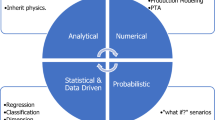Abstract
The pH neutralization process has long been taken as a representative benchmark problem of nonlinear chemical process control due to its nonlinearity and time-varying nature. For general nonlinear processes, it is difficult to control with a linear model-based control method so nonlinear controls must be considered. Among the numerous approaches suggested, the most rigorous approach is the dynamic optimization. However, as the size of the problem grows, the dynamic programming approach suffers from the curse of dimensionality. In order to avoid this problem, the Neuro-Dynamic Programming (NDP) approach was proposed by Bertsekas and Tsitsiklis [1996]. The NDP approach is to utilize all the data collected to generate an approximation of optimal cost-to-go function which was used to find the optimal input movement in real time control. The approximation could be any type of function such as polynomials, neural networks, etc. In this study, an algorithm using NDP approach was applied to a pH neutralization process to investigate the feasibility of the NDP algorithm and to deepen the understanding of the basic characteristics of this algorithm. As the approximator, the neural network which requires training and the k-nearest neighbor method which requires querying instead of training are investigated. The approximator has to use data from the optimal control strategy. If the optimal control strategy is not readily available, a suboptimal control strategy can be used instead. However, the laborious Bellman iterations are necessary in this case. For pH neutralization process it is rather easy to devise an optimal control strategy. Thus, we used an optimal control strategy and did not perform the Bellman iteration. Also, the effects of constraints on control moves are studied. From the simulations, the NDP method outperforms the conventional PID control.
Similar content being viewed by others
References
Bertsekas, D. P. and Tsitsiklis, J. N., “Neuro-Dynamic Programming,” Athena Scientific, Massachusetts (1996).
Bryson Jr., A. E., “Dynamic Optimization,” Addison-Wesley Longman, Inc., California (1999).
Demuth, H. and Beale, M., “MATLAB Neural Network Toolbox Use’s Guide Ver 3.0,” The Math Works, MA (1998).
Gustafsson, T. K. and Waller, K. V., “Nonlinear and Adaptive Control of pH,”Ind. Eng. Chem. Res.,31, 2681 (1992).
Gutierrez-Osuna, R., “Lecture Note: Introduction to Pattern Recognition,” Wright state University (2002).
Henson, M. A. and Seborg, D. E., “Adaptive Input-Output Linearization of a pH Neutralization Process,”Int. J. Adapt. Control Signal Process,11, 171 (1997).
Henson, M. A. and Seborg, D. E., “Adaptive Nonlinear Control of apH Neutralization Process,”IEEE Trans. on Control Systems Technology,2, 169 (1994).
Kaisare, N. S., Lee, J. M. and Lee, J. H., “Simulation Based Strategy for Nonlinear Optimal Control: Application to a Microbial Cell Reactor,”Int. J. Robust Nonlinear Control,13, 347 (2003).
Lee, J. H., “Lecture Note: From Model Predictive Control to Simulation Based Dynamic Programming: A Paradigm Shift,” Georgia Institute of Technology (2003).
Lee, J. M. and Lee, J. H., “Simulation-Based Learning of Cost-To-Go for Control of Nonlinear Processes,”Korean J. Chem. Eng.,21, 338 (2004).
Yoo, A., “Experimental Parameter Identification and Control of pH Neutralization Process Based on an Extended Kalman Filter,” Master Thesis, Korea University (2002).
Author information
Authors and Affiliations
Corresponding author
Rights and permissions
About this article
Cite this article
Kim, D.K., Lee, K.S. & Yang, D.R. Control of pH neutralization process using simulation based dynamic programming. Korean J. Chem. Eng. 21, 942–949 (2004). https://doi.org/10.1007/BF02705575
Received:
Accepted:
Issue Date:
DOI: https://doi.org/10.1007/BF02705575




